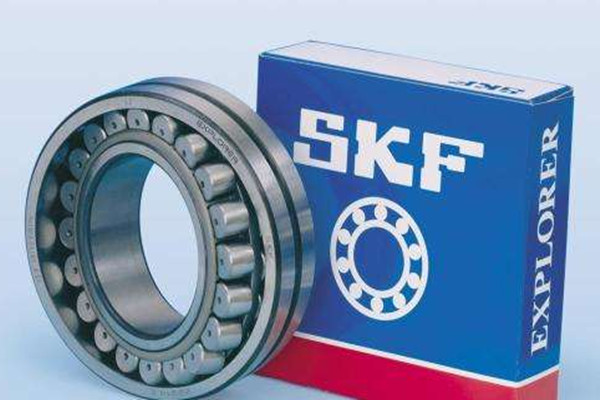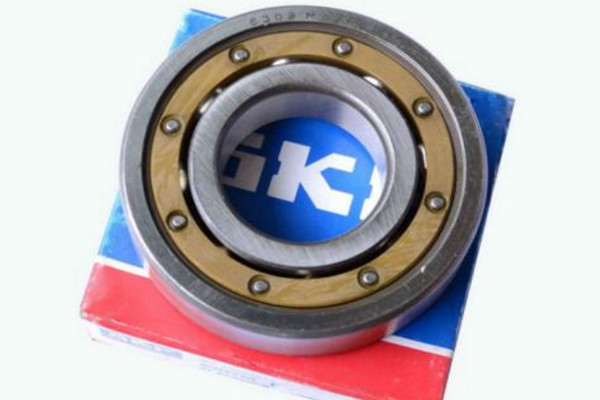The speed that a rolling bearing can reach is limited. Usually, the rate of a bearing is limited by the operating temperature limit that can be achieved by the lubricant and the bearing component material. The speed at which SKF needle bearings reach the extreme operating temperature depends on the heat generated by the bearing, any external weather, and the excitement that can be taken away from the bearing.

The heat generated by SKF needle bearings depends on the bearing type, size, internal design, load, lubrication, and alignment. It is also affected by other factors, including cage design, accuracy, and domestic clearance.
Two speeds are listed in the SKF roller bearing catalog, reference speed (related to heat), and limit speed (compared to mechanical structure).
In general, the limit speed of SKF needle bearings is higher than the reference speed. However, for some bearing series, the reference speed may be more top than the limit speed because the friction characteristics are better than the bearing's mechanical ability to allow high speed to be maintained. However, in any case, the limiting speed of the bearing must always be taken into account, even if the bearing is operating under the most favorable operating conditions.
Limit speed
The limit speed of SKF needle bearings depends on certain specific conditions, including the stability or strength of the cage structure, the lubrication conditions of the cage guide surface, the centrifugal and rotational forces acting on the rolling elements, the accuracy of the bearing housing and other speeds. Constraints such as seals and lubricants for sealed bearings.
Experience shows that even if SKF needle bearings operate under the most favorable load and friction conditions, the cost required for technical reasons or to maintain stable working conditions for a specific time is too high and should not exceed the maximum speed.
The limit speeds listed in the product list are suitable for basic bearing designs. When the limit speed is higher than the reference speed, the operating temperature may be significantly higher than the reference value. Under these conditions, proper measurements (retainers, seals, pre-tensioning, and whether the lubricant can withstand high temperatures) may be required. If these measurements are not sufficient, you need to verify the internal clearance of the bearing and the accuracy of the bearing housing and journal and make appropriate adjustments to meet more severe working conditions.
In addition, it must be considered whether the materials in the SKF needle roller bearings system meet the requirements of the bearing operating temperature and the required service life. When the stable operating temperature is higher than the recommended maximum temperature of the bearing material permanent stage (for example, for SN stages, the recommended high temperature is 120℃), a bearing with a more upper stable stage may be required to maintain the mounting stress and the inside clearance.

For grease, other factors should also be considered, such as the lubrication conditions of the cage guide surface and the consistency of the lubricant at the operating temperature.
The friction of some open ball bearings is very low, and the reference speed listed in the product table may be higher than the limit speed. Therefore, it is necessary to calculate the adjusted reference speed and compare it with the limit speed, and then take the lower value between the two. In some exceptional cases, such as for some cylindrical roller bearings, if other cages are selected, the bearings can be operated at a higher speed than the standard limit speeds listed in the table.
If the bearing is required to run above the limit speed in the product list, some factors that restrict the rate must be improved. To modify SKF needle roller bearings, lubrication systems, or applications. Modifications may include improving bearing rotation accuracy, changing cage materials and structures, lubrication conditions, and cooling methods.
In some implementations, other factors are more critical than the limit speed. Such as:
(1) Low speed. When the rotation speed is deficient, it isn't very easy for the contact surface between the rolling elements and the raceway to form an elastic hydraulic lubrication film. In these applications, the use of lubricants or stable oils containing extreme pressure (EP) additives should be considered.
(2) Swing back and forth. In this mode of motion, the direction of rotation of the bearing has changed before one revolution. Because the SKF needle roller bearings rotate at the moment of reverse rotation and the speed is zero, it is impossible to maintain a complete hydraulic lubrication film. In these cases, in order to obtain a load-bearing boundary lubricant film, a lubricant containing sufficient extreme pressure (EP) additives should be used. Hybrid ceramic bearings can perform well under insufficient lubrication, so they have excellent performance in applications with rapid acceleration, deceleration, and load reversal (direction change). Usually, under reciprocating conditions, a specific rated speed or modern speed cannot be given. Because the highest rate that can be achieved does not depend on the thermal balance, but on the inertial force acting on the bearing. During each reverse rotation, the rolling body may slide a certain distance due to inertia, causing wear to the raceway. The permissible acceleration and deceleration depending on the mass of the rolling elements and cages, the type and amount of lubricant, working clearance, and bearing load.
2. Reference speed
The reference speed in Catalogue SKF is a reference value used to determine the allowable working speed of the bearing under a given pressure and lubricant viscosity. The reference speed (related to heat) is a quick reference to the speed performance of SKF needle roller bearings based on the standard reference value for heat flux density established in ISO 15312. The ISO standard provides reference working conditions and standard benefits for heat flow under these reference conditions.
Lubrication method: oil bath lubrication, the center of the rolling element with the oil level at the lowest position
For lubricated grease bearings
Lubricant: lithium soap mineral oil grease, base oil viscosity is 40-200mm, 100-200mm2/s (eg, ISO VG 150)
Grease filling amount: about 30% of the free space in the bearing.
When the load and viscosity are higher than the specific operating conditions of the reference speed, the friction in the bearing will increase. Unless more upper bearing operating temperatures are allowed, the reference speed in the product list will not be reached. Conversely, it is possible to achieve higher rates with lower viscosity. If the speed of the bearing is increased above the reference speed, but no precautions are taken, the temperature of the bearing may rise sharply. Increasing bearing temperature will reduce the viscosity of the lubricant, making it more difficult to form a compelling oil film, which will lead to increased friction and a further increase in bearing temperature. If the working clearance of SKF needle roller bearings decreases due to the simultaneous rise of the bearing inner ring, the bearing will eventually get stuck. Any condition higher than the reference speed usually indicates that there is a significant temperature difference between the inner and outer rings. Therefore, it is generally necessary to use a product with a larger clearance group such as C3 and carefully observe the bearing temperature distribution.
Hot Tags: